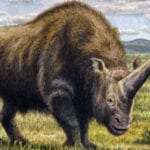 Movies and TV
Movies and TV  Movies and TV
Movies and TV  History
History 10 Things You Never Knew About Presidential First Ladies
 Movies and TV
Movies and TV 10 Zombie Movies That Will Actually Terrify You
 Humans
Humans 10 Times Scientists Were Absolutely Sure… and Absolutely Wrong
 Our World
Our World 10 Pivotal Moments for Life on Earth
 Movies and TV
Movies and TV 10 Most Realistic Medical TV Shows of All Time
 Creepy
Creepy 10 Eerie & Mysterious Ghosts of the Pacific Coast
 Weird Stuff
Weird Stuff 10 Typos That Accidentally Changed History
 History
History 10 Times Trickery Won Battles
 Technology
Technology 10 Awesome Upgrades to Common Household Items
 Movies and TV
Movies and TV 10 Movie Flops That Found Their Way to Cult Classic Status
 History
History 10 Things You Never Knew About Presidential First Ladies
 Movies and TV
Movies and TV 10 Zombie Movies That Will Actually Terrify You
Who's Behind Listverse?

Jamie Frater
Head Editor
Jamie founded Listverse due to an insatiable desire to share fascinating, obscure, and bizarre facts. He has been a guest speaker on numerous national radio and television stations and is a five time published author.
More About Us Humans
Humans 10 Times Scientists Were Absolutely Sure… and Absolutely Wrong
 Our World
Our World 10 Pivotal Moments for Life on Earth
 Movies and TV
Movies and TV 10 Most Realistic Medical TV Shows of All Time
 Creepy
Creepy 10 Eerie & Mysterious Ghosts of the Pacific Coast
 Weird Stuff
Weird Stuff 10 Typos That Accidentally Changed History
 History
History 10 Times Trickery Won Battles
 Technology
Technology 10 Awesome Upgrades to Common Household Items
Top 10 Prehistoric Planetary Apocalypses
The planet Earth has seen some seriously savage events in the ancient past, and researchers have only recently been able to assemble enough details to present us with a rough picture. The impact that wiped out the dinosaurs has been well-covered but will be included here because of a recently discovered twist.
The saga of Earth’s violent youth is still being written, and the chapters penned by modern science are far more fascinating than any high-budget Hollywood epic.
10 Younger Dryas Impact/Lake Agassiz
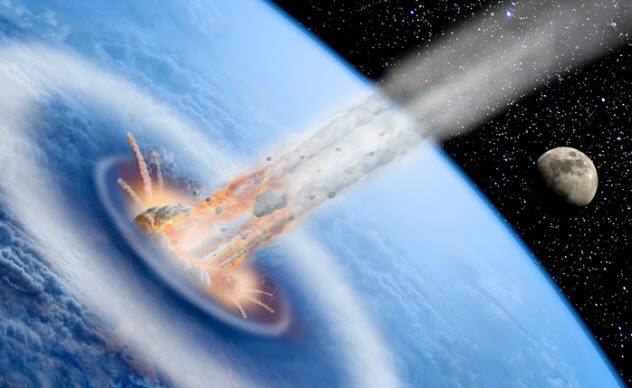
Much of North America’s classic megafauna—including mastodons, saber-toothed cats, giant sloths, and more—went extinct around 13,000 years ago. This extinction coincided with a geological period known as the Younger Dryas.
The Younger Dryas occurred near the end of the last ice age when the Earth was warming and glaciers were receding. For some reason, the warming stopped and global temps plummeted up to 24 degrees Celsius (43 °F) within a few short decades.
The chill lasted for over 1,000 years, killing many species. This extinction has been described by geologists as “geologically instantaneous [and] the most extreme manifestation of climate change in the geological record.”
Although it was a mystery for many years, scientists today have a very interesting theory as to what brought about such conditions. As ice ages end and glaciers retreat, very large meltwater lakes can form within the glaciers themselves.
Lake Agassiz was one such incredibly massive lake. It spanned a general area of roughly 945,000 square kilometers (365,000 mi2), which is about five times the land area of North Dakota.[1] The ice dam containing this lake collapsed, releasing nearly 16,000 square kilometers (6,000 mi2) of cold, fresh meltwater into the warm ocean currents and dropping the Earth’s temperature.
A current school of thought is that an asteroid may have caused this dramatic cold snap. Harvard scientist Michail Petaev and his colleagues state that this impact is evident from high amounts of platinum and iridium—cosmic fingerprint evidence of an iron meteorite impact—that were found in a Greenland ice core sample from this part of the Holocene Epoch. Other scientists have discovered nanodiamonds and impact-produced carbon particles from this same sediment layer, supporting the hypothesis.
9 Gamma-Ray Burst Mass Extinction
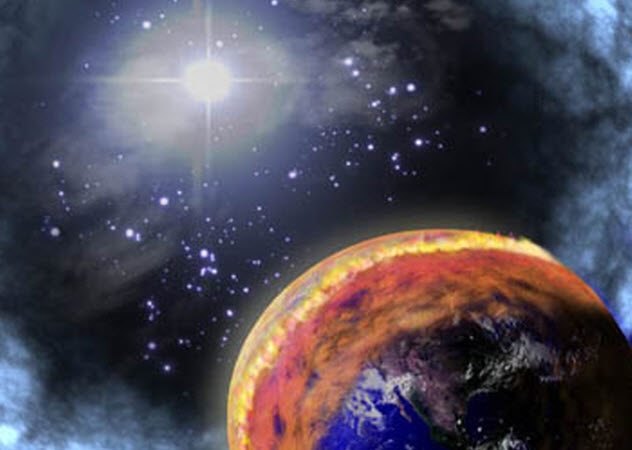
As it appears from Earth, the cosmos seems to be the peaceful, nighttime image of serenity. But it can also be the stage of extreme violence.
Gamma-ray bursts (GRBs) occur at the supernova deaths of massive stars and are the most powerful explosions in the universe. The extremity of their violence is hard for the human mind to comprehend. They can last from milliseconds to minutes and, in that time frame, emit as much energy as the Sun puts out in 10 billion years.
University of Kansas and NASA scientists have used atmospheric modeling to hypothesize that just such an explosion may have caused the mass extinction that occurred during the Ordovician Period. This was over 200 million years before the first dinosaurs walked the Earth and long before there was any animal or significant plant life on land.
The scientists determined that even a 10-second burst from 6,000 light-years away would destroy half the Earth’s ozone and expose all living things to lethal ultraviolet radiation from the Sun. Small life-forms that form the base of the food chain (such as plankton) would be severely depleted. Chemical changes in the atmosphere would have led to planetary cooling, disrupting ecosystems everywhere.
Brian Thomas, then a PhD candidate at the University of Kansas, said that as much as 60 percent of the marine invertebrates may have been wiped out. Near-surface creatures would have been immediately affected by the lack of food and exposure to the Sun’s ultraviolet rays, while the deepwater creatures could have held out for longer. Eventually, the food chain disruption would have caught up to them as well.
An interesting BBC documentary was done on the subject, and you can view it here.[2]
8 Lunar Cataclysm
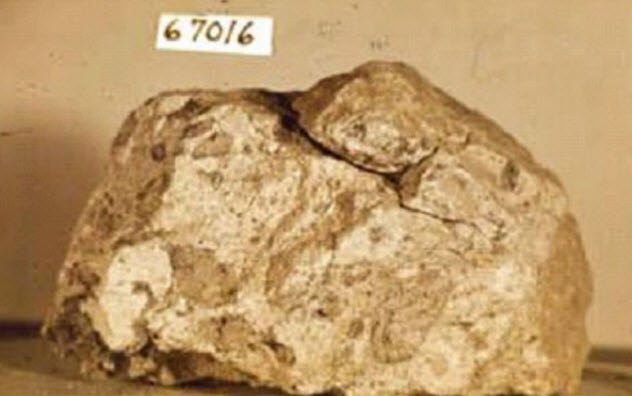
Imagine the Earth being hit with many massive space rocks (picture Texas-sized boulders) over a stretch of many millions of years. This occurred early in Earth’s history. “[Around 3.9 billion years ago,] Earth would have been a miserable place to be alive,” says Oregon State University researcher Robert Duncan.
Known as the Late Heavy Bombardment, this event describes the series of deadly impacts suffered by Earth early in its history, likely due to the disturbance of the asteroid belt between Earth and Mars. Evidence on Earth for these impacts has long been erased due to erosion and plate tectonic action, so it wasn’t until the Moon landings that retrieved Moon rocks told the story.
Chemical “fingerprinting” and radiometric dating techniques used on Moon rocks have revealed that both the Earth and Moon sustained a meteoric barrage around the time that life is thought to have first begun developing on our planet. Scientists believe the bombardment lasted for about 100 million years.[3]
Here are some current theories as to the origin of the asteroid belt disturbance: the existence of a “Planet V” that formed within the zone of smaller planets but was swallowed up by the Sun, the synchronous resonance of Jupiter’s and Saturn’s orbits (the most popular theory), and a possible collision of the unnamed 10th and 11th planets in the outer solar system.
7 Storegga Slide
Imagine that the UK was once a peninsula of Europe and not an island. What fantastically violent event would transform this landmass into the island nation that we would recognize today?
Start with a landslide the size of Scotland. Place it underwater in the darkness of a prehistoric ocean, amid all kinds of undiscovered, ancient, and deadly marine life, and picture the resulting tsunami. It paints a frightening picture indeed.
Around 8,000 years ago, that is exactly what happened off the Scandinavian coast.
A prehistoric earthquake shifted up to 3,500 cubic kilometers (840 mi3) of sediment (roughly 2,000 times the mass of material that was displaced during the Mount St. Helens eruption). It slid across the sloping ocean floor for about 800 kilometers (500 mi).
The tsunami punched the shores of Norway with a front wave 11 meters (35 ft) high. It was 9 meters (30 ft) high in the Faroe Islands, and up to 27 meters (90 ft) high in the Shetlands. A landlocked Norwegian Sea was released into the marsh-speckled tundra (“Doggerland” region, as it was called), turning the southern lowlands into the English Channel as we know it today.
“Anyone standing out on the mud flats at that time would have been dismembered. The speed [of the water] was just so great,” says geologist David Smith of Oxford University. “The waves would have been maybe as much as 10 meters (33 ft) high.”[4]
The earthquake may have been caused by a collapse of spongelike methane hydrate deposits on the subterranean floor at the base of massive sediments that had built up over a very long time. The water hit the English coast with enough force to travel 40 kilometers (25 mi) inland, entirely changing the coastal geography and dooming whatever hunter-gatherer colonies existed in the area.
The dry, cold tundra that was home to thousands of our mammoth-hunting ancestors was completely submerged. Shockingly, it wasn’t even the largest slide in ancient history! Most scientists agree that that honor goes to our next entry.
6 Markagunt Gravity Slide
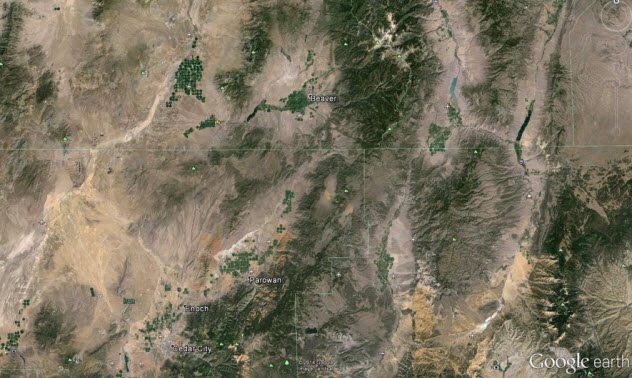
Geologists David Hacker, Robert Biek, and Peter Rowley wrote a paper on an ancient landslide, once thought to have been several different slides separated in time, but eventually found to be one jaw-dropping monster of a landslide. Most other ancient landslides that have been discovered so far—as fearsome as they are in scale and magnitude—pale shamefully in comparison.[5]
Twenty-one million years ago, a landslide occurred between what is now Beaver, Utah, and the Bryce Canyon National Park. Large masses of rocky sediment, built up over long periods from volcanic action, rested heavily and at a steep angle atop a weaker layer of softer, clay-rich sediment. Magma swelling into a dome-like structure put even more pressure on the weaker layer supporting it until it collapsed. The collapse may have been triggered by a violent event like an earthquake or an eruption.
Once loose, the massive sheet of rock slid on the top of the softer clay layer for miles until the clay layer stopped. Then the top mass slid on its own even further. The entire mass slid over 89 kilometers (55 mi) and covered roughly 3,400 square kilometers (1,300 mi2).
It was very fast-moving—taking only a few minutes—and it was violent, overrunning every living thing in its path. Most of the slide itself was composed of huge blocks that covered several kilometers apiece. To this day, they are mostly upright and intact.
The immense friction from the slide melted rock into glass structures known as pseudotachylytes. The discovery of these pseudotachylytes provided the initial indicators of the presence and magnitude of the landslide.
5 Gibraltar Breach
The Rock of Gibraltar offers a majestic view. You may look at the African coast from its Andalusian summit in Europe and watch the boats pass through the Strait of Gibraltar.
During an ice age 5.3 million years ago, the lower sea level gave rise to a narrow land bridge that joined Europe to Africa, blocking the entry of the Atlantic Ocean. The Mediterranean basin was a desert with very salty lakes left over from seawater that had evaporated 300,000 years earlier.
That ice age ended, the sea level rose, and the land bridge subsided just enough to allow a breach. It started slowly as a “trickle” and, over several thousand years, built up enough steam to become one of the largest waterfalls the world had ever known. It carved an ever-deepening channel into the land as it grew.
The flow of seawater contained probably 1,000 times the volume of the Amazon River! The trickle became a torrent of such magnitude that 90 percent of the Mediterranean basin was refilled in as little as a few months, although it may have taken as long as two years according to Daniel Garcia-Castellanos, a geophysicist in Barcelona.[6]
Under these conditions, the Mediterranean water level would have been rising as much as 10 meters (33 ft) a day. It destroyed any and all flora and fauna that existed at the time and created the Mediterranean Sea as we know it today.
The subsidence of tectonic plates is thought to be the cause, but much research is left to be done before more definitive conclusions can be reached.
4 Black Sea Deluge (Noah’s Flood)
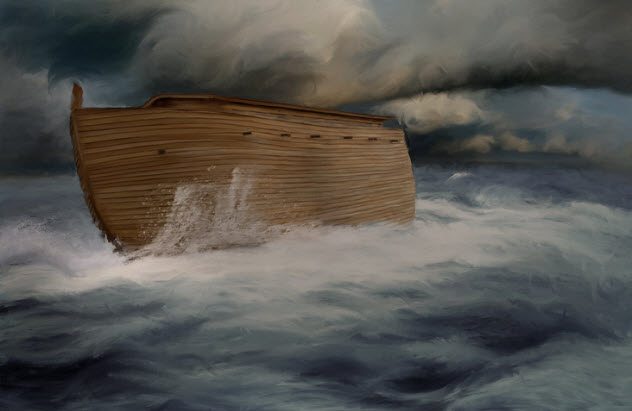
No less a legend than Dr. Robert Ballard—discoverer of the wreck of the Titanic—has proposed the theory that would explain the origin of the well-known “flood myths” of ancient lore.
A 1999 marine expedition led by Ballard discovered signs of human occupation and man-made structures at the bottom of the Black Sea. The discovery of an ancient shoreline, as well as the remains of freshwater mollusks, indicated that there was once a freshwater lake under what is now the salty Black Sea. This was evidence of a massive flood. Radiocarbon dating supports a date for the deluge of around 7,000 years ago.
Rising sea levels were caused by melting glaciers during a warming period at the end of one of the many past ice ages. These waters threatened the area around the Bosporus Strait, which may have been a land bridge at one time. It is now a land bottleneck in Asia Minor that opens up into the Black Sea.
At some point, the land bridge was breached. The Mediterranean Sea poured in at roughly 42 cubic kilometers (10 mi3) every day, perhaps “with a force of 200 Niagara Falls,” according to Columbia University marine geologists Bill Ryan and Walter Pitman.
It would have left the terrified survivors to hand down legends of the flood through oral traditions of many generations. It may have inspired the flood stories[7] of Noah, Gilgamesh, and other peoples of the ancient world.
3 ‘The Great Dying’
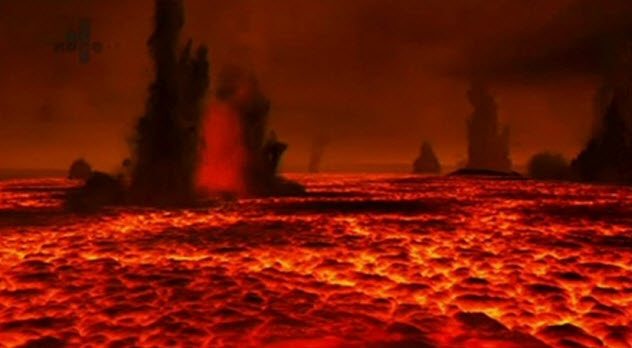
Also known as the Permian-Triassic extinction event, “the Great Dying” was the largest mass extinction of life on Earth. It happened many millions of years before the dinosaurs roamed the planet.
Nearly a quarter of a billion years ago, at the end of the Permian era, 90 percent of the planet’s life was wiped out. Only 4 percent of sea life survived. Almost all the trees were gone. The culprit of this terrible geologic crime is believed to be massive “flood basalt eruptions” that happened in a region known today as the Siberian Traps.
Flood basalt eruptions differ from familiar forms of volcanism. Instead of lava erupting from a cone-like mountain, it erupts from large openings in the Earth itself and spreads over a very large area. This is believed to have occurred when the Earth’s landmass consisted of one continent (Pangaea). The specific event location was what is now modern-day Siberia.
The eruption covered an area of 3 million cubic kilometers (720,000 mi3), and it lasted for millions of years. Massive amounts of carbon dioxide and sulfur dioxide were released into the air, poisoning the atmosphere and causing abrupt climate change.
An area the size of the United States was covered in lava 1 kilometer (0.6 mi) deep. The oceans were acidified and starved of oxygen. Oceanic circulation was also impeded. Short-term nuclear winters would have been followed by long-term global warming. The long-term effect was devastating to all life, and the planet took millions of years to recover.
“It’s literally a singular event in Earth history—it’s a monster,” says MIT PhD Seth Burgess. “It makes Yellowstone (supervolcano) look like the head of a pin.”[8]
2 Shiva Impact—Double Dinosaur-Killing Impact!
According to a new theory, it was not one but two asteroid impacts that killed the dinosaurs.
The well-known Chicxulub crater of the Yucatan Peninsula in Mexico bears witness to the massive impact that led to global climate changes and mass extinction. The asteroid that hit the Earth in the Late Cretaceous 65 million years ago was 10 kilometers (6 mi) wide and produced a crater about 180 kilometers (110 mi) across.[9]
A mere 300,000 years later, while the Earth was still geologically recovering from that impact, a 40-kilometer-wide (25 mi) rock hit the ocean off the west coast of India, leaving a crater that was 480 kilometers (300 mi) wide.
“If we are correct,” paleontologist Sankar Chatterjee said, “this is the largest crater known on Earth.” The crater was appropriately named the Shiva crater after the Hindu god of destruction. It is thought that that this event broke the Seychelles islands off the Indian subcontinent.
Some scientists have stated that the Earth’s crust was vaporized at the point of impact, initiating the flood basalt volcanism of the Deccan Traps (similar to the Siberian Traps). This released noxious gases and accelerated the rate of volcanism that was already rife in the area of western India at the time.
The impact was so severe that it deformed part of the Earth’s lithosphere mantle and shattered the Indian tectonic plate where the asteroid hit. Between the lethal kinetic impact energy, the massive tsunami, the lava flood jailbreak, and the gas release, struggling species that were previously on the edge must have had no chance.
The impact far surpassed the Chicxulub crater in scale and violence. “The dinosaurs were really unlucky,” said Chatterjee.
1 Theia Impact
The mother of all cosmic impacts occurred when a Mars-size planet (known as Theia) struck Earth during the free-for-all billiards game of colliding planetary bodies early in the history of the solar system. The Earth was smashed into a barely intact spinning spheroid of molten rock. This cataclysm produced the habitable Earth that we know today and gave us our Moon.
Molten debris that spun off immediately after the violent collision was kept in gravitational orbit by the rump of Earth that remained. The debris gradually coalesced into the familiar sphere that appears in our night sky.
Credit is again due to the Apollo missions and the subsequent study of Moon rocks. It was found that the Earth and the Moon rocks were uncannily similar in composition. This led scientists to deduce that the Earth and Moon were once the same object, which was violently separated by a massive protoplanetary collision early in Earth’s history.
Daniel Herwartz, an isotope geochemist at the University of Gottingen in Germany, found that the similarity in oxygen isotopes between Moon rocks and Earth rocks further reinforces the impact hypothesis. “This group of meteorites has a very, very similar isotopic composition to the Earth,” he said.[10]
Some scientists say that Theia was more of an E-type asteroid rather than a recognizable planet as we would picture it.
Beau Boivin is an extremely intelligent, witty, charming, suave, debonair bachelor who is very, very good-looking. He is also very humble about these facts and denies writing his own bio.
Read about more apocalypses on our planet on 10 Brutal Realities Of Life After The Nuclear Apocalypse and 10 Apocalypses That We Survived.





